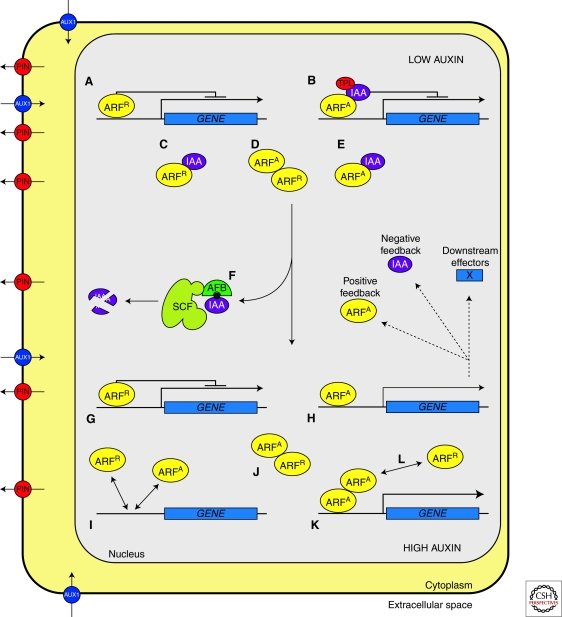Figure 2.
Schematic representation of AFB-Aux/IAA-ARF-mediated auxin response. When auxin levels are low, Aux/IAAs repress ARF-mediated transcriptional activation by dimerising with DNA-bound activating ARFs (ARFA) and recruiting the corepressor protein TPL (B), or theoretically by sequestering ARFA from their promoters (E). Although the occurrence and relevance in vivo of Aux/IAA-ARFR dimers is unknown, Aux/IAAs could affect ARFR activity by interfering with the formation of ARF R dimers through blocking or sequestration (C). When cellular auxin levels increase the affinity of the receptors TIR1/AFB for their substrate Aux/IAA increases, promoting the degradation of Aux/IAA via the proteasome (F). ARFA are then able to regulate positively transcription (H); it has been shown that some ARFs bind more stably to promoters as dimers (K) and this could increase their transcriptional activity. ARFR could repress transcription by directly binding to the promoter of target genes (A,G) and importantly, by competing with ARFA for common target AuxRE binding sites (I), or by interacting with activating ARFs, either on the promoter (L) or as free heterodimers (D,J).

